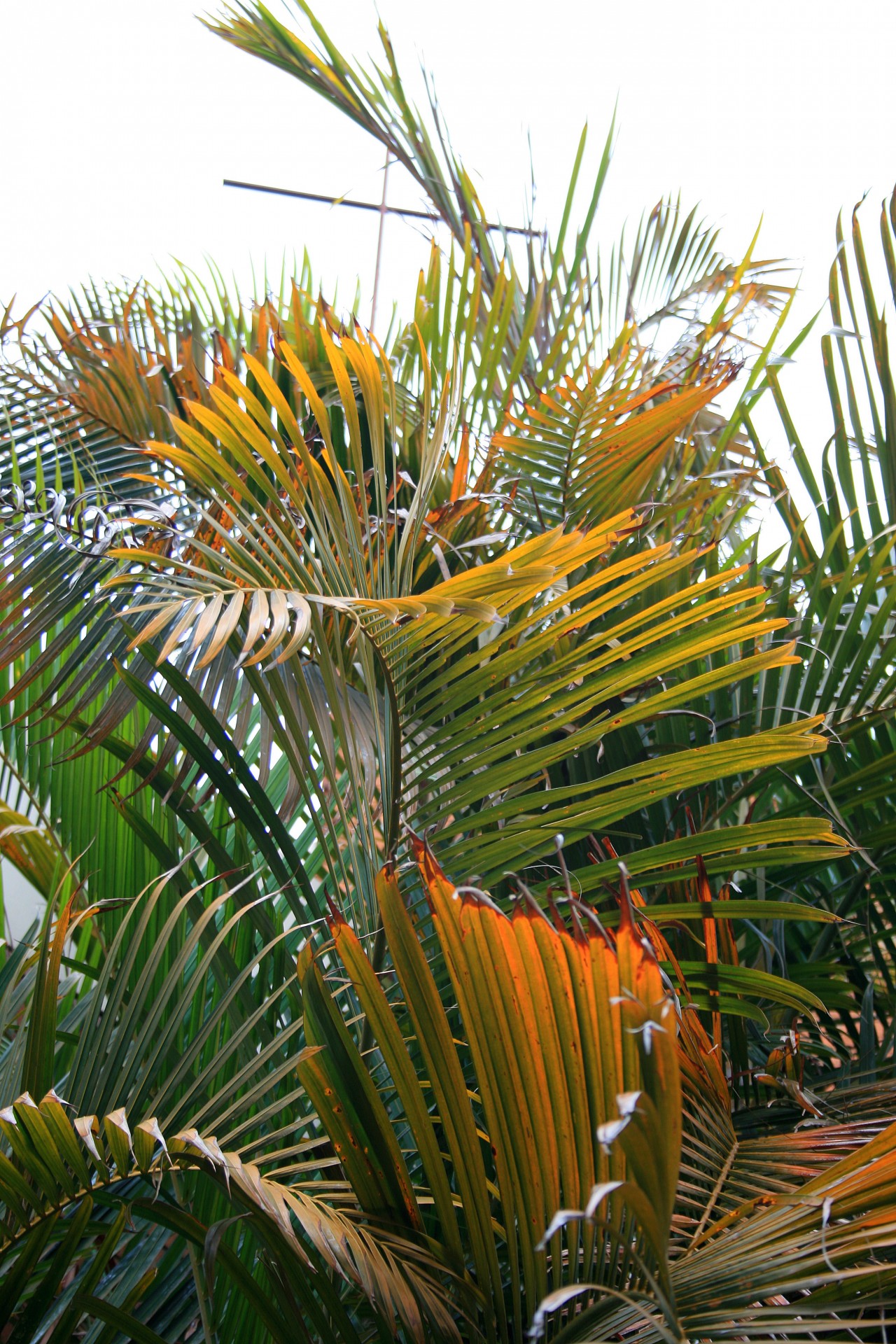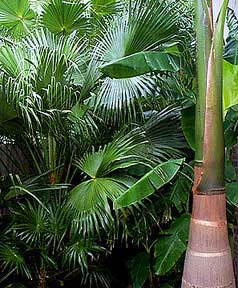Palm trees are famous for their tropical charm and can transform any landscape into a paradise. But when their leaves start turning yellow, it’s a sign that something is amiss. In this article, we’ll explore the reasons behind yellowing leaves on palm trees, understand nutrient deficiencies, discuss proper watering practices, and learn how to tackle pest infestations. By the end, you’ll have the knowledge needed to prevent and treat yellowing leaves on your beloved palm trees.
Understanding Yellowing Leaves on Palm Trees
When palm tree leaves turn yellow, it’s essential to understand why. There could be different causes, including nutrient deficiencies, overwatering, or pesky pests. By paying attention to specific signs and patterns of yellowing, we can better comprehend the issue and take appropriate action to address it.
Nutrient Deficiencies and Corrective Measures
One common culprit behind yellowing leaves is nutrient deficiencies. Palm trees require specific nutrients to flourish, and when they’re lacking, the leaves may turn yellow. To tackle this, it’s crucial to conduct a soil test. This helps determine which nutrients are in short supply. Based on the results, you can choose the right palm tree fertilizer to provide the necessary nutrients. Additionally, supplementing with micronutrients and foliar sprays can enhance the overall health of your palm tree.
Proper Watering Practices for Palm Trees
Overwatering or underwatering can also lead to yellowing leaves on palm trees. Achieving the perfect balance is vital. To determine when to water, check the moisture level in the soil. If it feels dry a few inches down, it’s time to give your palm tree a drink. Adequate drainage is essential to prevent waterlogging, so make sure the soil drains well. Adding mulch around the roots can help retain moisture. Remember, moderation is key when watering your palm tree.
Pest Infestations and Control Measures
Palm trees can sometimes fall victim to pesky pests, which can lead to yellowing leaves. The most common culprits include spider mites, palm aphids, and mealybugs. Don’t worry, though! You can take steps to control these pests and bring your palm tree back to health.
To combat pests, early detection is key. Regularly inspect your palm tree, paying close attention to the undersides of leaves and areas where pests tend to hide. Look out for tiny webs, sticky residue, or visible insects. If you spot any signs of infestation, it’s time to take action.
Natural and organic methods can be effective in controlling pests. For example, you can introduce beneficial insects like ladybugs or lacewings that feed on the pests. Additionally, you can make a simple homemade insecticidal soap using mild dish soap and water. Gently spray the solution on the affected areas of your palm tree to eliminate pests.
In more severe cases of infestation, you may need to resort to insecticides. Choose a palm-specific insecticide and carefully follow the instructions for application. Remember to prioritize your safety and that of the environment by using pesticides responsibly and sparingly.
Pruning and Trimming Techniques
Pruning and trimming your palm tree can do wonders for its overall health and appearance. Removing yellowing or dead leaves not only improves aesthetics but also prevents the spread of diseases. Plus, it allows the palm tree to redirect its energy towards new growth.
When pruning your palm tree, start by removing any dead or completely yellowed leaves. Use sharp pruning shears or a saw, depending on the size of the leaf. Aim to make clean cuts close to the trunk without damaging the tree.
Trimming palm trees is not just about leaves; it also involves removing any fruit stalks that have dried up or become unattractive. Simply cut them off at the base to tidy up the tree.
It’s important to be mindful of the frequency and timing of pruning. Over-pruning can stress the palm tree, so it’s best to only remove leaves that are truly dead or yellow. Aim to prune once or twice a year, and avoid excessive pruning during the growing season.
Prevention Strategies for Yellowing Leaves
Prevention is always better than cure, and this holds true for keeping your palm tree’s leaves healthy and vibrant. By implementing a few preventive measures, you can minimize the risk of yellowing leaves and maintain a thriving palm tree.
Regular inspection and maintenance are crucial. Take a close look at your palm tree on a routine basis to catch any signs of trouble early on. Keep an eye out for pests, diseases, or nutrient deficiencies. Promptly addressing any issues can prevent them from worsening and causing yellowing leaves.
During the planting process, ensure you choose a suitable location and prepare the soil properly. Palm trees thrive in well-draining soil, so make sure the area has good drainage. Avoid planting in areas prone to waterlogging, as excess moisture can lead to root problems and yellowing leaves.
Balancing sunlight and shade is also important for palm tree health. While they need sunlight to grow, excessive exposure to scorching rays can damage the leaves. Consider providing some shade during the hottest part of the day to protect your palm tree.
Lastly, safeguard your palm tree against extreme weather conditions and physical damage. Strong winds or storms can cause fronds to bend or break, resulting in yellowing leaves. Protect your tree by providing support or taking measures to shield it during inclement weather.
Case Studies and Success Stories
Let’s take a look at some real-life examples of how gardeners successfully prevented and treated yellowing leaves on their palm trees. These stories highlight valuable lessons and best
practices that you can apply to your own palm tree care routine.
One gardener, Sarah, noticed yellowing leaves on her palm tree and quickly identified a nutrient deficiency. She conducted a soil test, which revealed a lack of potassium. By applying a palm tree-specific fertilizer with a balanced nutrient ratio, Sarah was able to restore the tree’s health, and the yellowing leaves gradually turned green again.
Another success story comes from Mark, who noticed an infestation of spider mites on his palm tree. He introduced ladybugs to his garden, which naturally feed on spider mites. Over time, the ladybugs controlled the pest population, and the yellowing leaves stopped spreading. Mark’s palm tree regained its vitality.
These examples demonstrate the effectiveness of proactive measures, early detection, and targeted treatments. By understanding the specific needs of your palm tree and taking swift action, you too can achieve success in preventing and treating yellowing leaves.
Conclusion
Preventing and treating yellowing leaves on palm trees is essential for their overall health and visual appeal. By addressing nutrient deficiencies, practicing proper watering techniques, controlling pests, and implementing preventive strategies, you can ensure your palm tree remains vibrant and lush.
Remember to regularly inspect your palm tree, be attentive to its needs, and take prompt action when necessary. By maintaining a healthy and thriving palm tree, you’ll enjoy its beauty and benefits for years to come.
Resources and Further Reading
For additional guidance and information on caring for palm trees, consider exploring the following resources:
– Betrock’s Essential Guide to Palms by David Leaser
– Online forums and communities dedicated to palm tree enthusiasts
– Local agricultural extension offices or arborist associations in your area
Continued learning and exploration will empower you to be a confident palm tree caregiver, ensuring the long-term vitality of your cherished trees.




